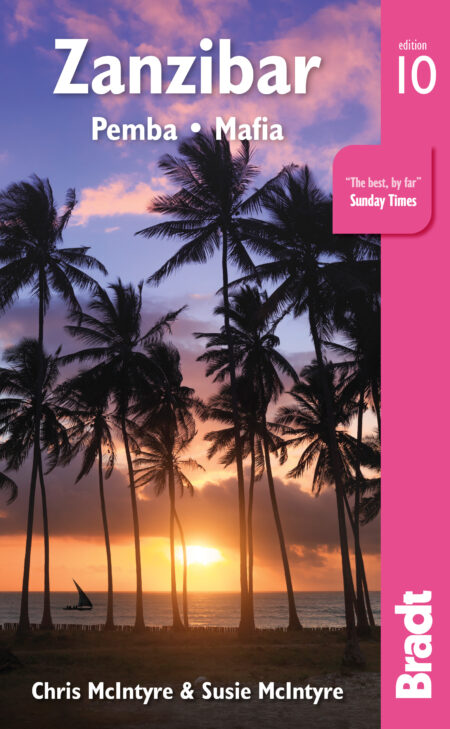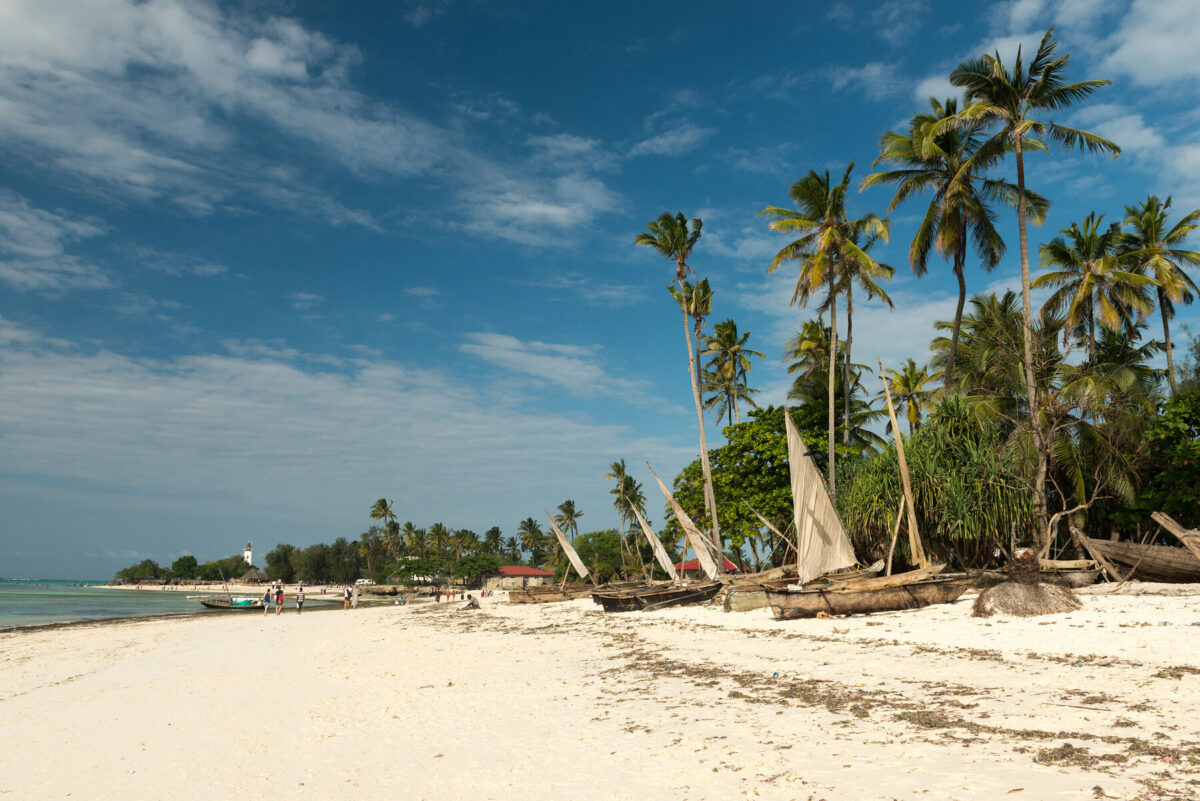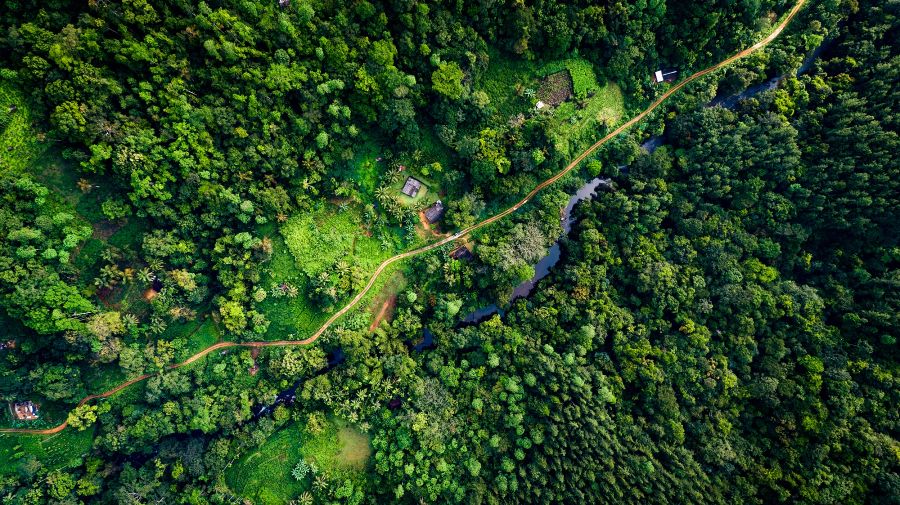It remains impossible not to be enchanted as you approach from the air, looking down on sparkling turquoise waters, darkened only by patch reefs, and punctuated by the billowing triangular white sails of passing dhows.
Chris and Susie McIntyre, authors of Zanzibar: The Bradt Guide
Zanzibar is one of our hot destinations for the year ahead – check out the full list of the best places to travel in 2024 here.
Zanzibar is a magical, evocative African name, like Timbuktu, Casablanca or Kilimanjaro. For many travellers, the name alone is reason enough to come. Yet although expectations run high, awareness of the reality on Zanzibar and its neighbouring islands is often rather hazy.
For many, the islands offer a quintessential Indian Ocean experience: palm-lined stretches of powder-white coral sand line the coast for miles, while below the waves, reef fish flit among colourful coral gardens, overshadowed only by the occasional pelagic looming out of the blue. From the nesting turtles on Juani to the whale sharks seen annually off Mafia, there is always something unexpected awaiting the diver and snorkeller. On land, too, these islands can enthral. Kirk’s red colobus monkeys can be seen in the forest, Arabian architecture provides an exotic urban backdrop, and village life remains steeped in tradition.
Our message is clear: don’t discount the less well-known areas of Zanzibar, Pemba Island or the Mafia Archipelago. And for some of the best experiences, get off the beaten track, ideally with knowledgeable residents. Your choices will make a difference not only to your stay, but also to the communities that you encounter.
For more information, check out our guide to Zanzibar
Food and drink in Zanzibar
Restaurants
In Zanzibar Town, and increasingly most other main resort areas, there are several good restaurants catering specifically for visitors, specialising in local dishes, seafood or curries; mains usually cost between US$7 and US$15, but there are also smarter restaurants, where prices are a little higher, and restaurants where less-elaborate meals and snacks cost around US$5–7.
In Zanzibar Town and other urban conglomerations there are also some small eating-houses that cater mainly to local people, where you can eat for around US$2–3. They usually only have one or two types of food available, such as stew and rice, but they also serve chapattis, samosas and other snacks.
Cafés and bars
In Zanzibar Town, many places serve drinks as well as food, although at busy times you may be required to buy a meal rather than have a drink on its own. You can buy international and Tanzanian brands of fizzy drink, plus local and imported beers. Prices vary greatly according to where you drink: a bottle of Coke from a shop or small backstreet café costs US$1, but may cost four times this in a smarter café or restaurant. A bottle of local beer (including Safari, Tusker or Kilimanjaro) costs US$1.50 in a local bar, and at least double this in smarter places.
At larger hotels and restaurants in Zanzibar Town or on the coast you can also buy imported beers, wines (mostly from South Africa) and spirits.
Self-catering
If you plan to provide for yourself in Zanzibar Town, there are several shops selling locally produced bread and cakes, plus a reasonable choice of food in tins and packets imported from Kenya and beyond. Zanzibar Town has a market that’s good for fruit and vegetables, plus fresh meat and fish if you have a means of cooking it. Other towns have small markets where you can buy meat, fish, fruit and vegetables, and shops with a limited but adequate supply of tinned food.
Health and safety in Zanzibar
Health
People new to exotic travel often worry about tropical diseases, but it is accidents that are most likely to carry you off. Road accidents are very common in many parts of Zanzibar so be aware and do what you can to reduce risks: try to travel during daylight hours, always wear a seatbelt and refuse to be driven by anyone who has been drinking. Listen to local advice about any areas where crime is an issue.
When travelling around Zanzibar or East Africa, the different climatic and social conditions mean visitors are exposed to diseases not normally encountered at home. Although you will likely have received all the vaccinations recommended, this does not mean you will be free of all illness during your travels: certain precautions still have to be taken. You should read a good book on travel medicine and be aware of the causes, symptoms and treatments of the more serious diseases. But don’t let this put you off – with a little care and attention most of these illnesses can be avoided.
Diseases and vaccinations
Make sure all your immunisations are up to date. Officially, proof of vaccination against yellow fever is only needed for entry into Zanzibar if you are coming from another yellow fever endemic area, but the Zanzibari authorities have been known to request proof of vaccination for visitors coming from Tanzania – which effectively incorporates most visitors.
It’s also reckless to travel in the tropics without being up to date on tetanus, polio and diphtheria (now given as an all-in-one vaccine, Revaxis) and hepatitis A. Immunisation against typhoid, hepatitis B and rabies may also be recommended.
The biggest health threat is malaria. This potentially fatal mosquito-borne disease has largely been eradicated from Zanzibar and Pemba in recent years, thanks to the widespread use of insecticide-treated nets and indoor spraying, and the prevalence stood at an all-time low of less than 1%. Despite this, the amount of human traffic between the mainland and the islands means that it has not been eliminated entirely, and visitors should take all precautions against it.
Though advised for everyone, a pre-exposure rabies vaccination, involving three doses taken over a minimum of 21 days, is particularly important if you intend to have contact with animals, or are likely to be 24 hours away from medical help.
Safety
As in most countries, crime on these islands is gradually on the increase. Similarly, problems tend to occur with greater frequency in the cities and tourist heartlands than in the rural areas. Perhaps inevitably, the juxtaposition of relatively wealthy tourists and a high density of relatively poor local people causes envy and leads to the occasional crime.
Zanzibar Town is notorious for opportunist pickpockets, and occasionally tourists do have bags and cameras snatched while walking around the narrow streets of Stone Town. There have also been robberies on some of the beaches around Zanzibar Town; it is better not to go there alone, especially at night. The authors have yet to hear of any crime problems on Mafia Island – but this is a small, rural island with a low population density.
You can reduce the chances of having anything stolen by not displaying your wealth. Don’t bring valuable jewellery to these islands; leave it at home. Keep your valuables secure, out of sight and preferably back in the safe at your hotel. Keep most of your money there too, and do not peel off notes from a huge wad for every small purchase. Wandering around the town with an expensive camera casually slung over your shoulder or a state-of-the-art iPhone is insensitive and simply asking for trouble. A simple, dull-looking bag is much safer than something smart or fashionable.
Islamic terrorist groups are present in East Africa, and to a varying degree, pose a threat across the entire region. In Zanzibar specifically, there were two explosions in Zanzibar Town in 2013. There was also a bomb attack near a mosque in Stone Town in June 2014, which killed one person and injured several others. No such incident has occurred since.
With the rise of global terrorism, some travellers have looked nervously towards East Africa, but the truth is that the large Islamic communities on the islands are generally very peaceful, though they probably have their extremist elements, very much like the extremists who live in communities in the UK, Europe and the USA. So whilst Zanzibar has many factors that may cause initial concern, at the time of writing the British Foreign and Commonwealth Office do not cite the risk from terrorism as higher than in Western Europe or the USA.
When to visit Zanzibar
The best time to visit the islands of Zanzibar is during the dry seasons – December to February and June to October – but generally speaking, from December to February any wind comes from the northeast, so beaches on the southern and western parts of the islands are more sheltered. Conversely, from June to October it tends to come from the southwest, so northern and eastern coasts are best. Ultimately, however, these islands are at the mercy of the ocean and their weather patterns can be unpredictable at any time of year. Even during the ‘dry’ seasons, afternoon showers are not unknown, although they tend to be short and pleasantly cooling.
It is also possible to visit during the rainy season, when there are fewer visitors and you’re more likely to get good bargains from lodges and hotels (the ones that remain open) and trips. The rain can be heavy, but is not usually constant; the sunsets can be particularly magnificent; and pineapples are in season! Travel can be trickier, with roads damaged and buses delayed, but you’ll get there eventually.
Climate
The climate of Zanzibar is dominated by the movements of the Indian Ocean monsoons, and characterised by wet and dry seasons. The northeast monsoon winds (known locally as the kaskazi) blow from November/December to February/ March, and the southwest monsoon winds (the kusi) blow from June to September/ October. The main rains (the masika) fall from mid-March to the end of May, and there is a short rainy season (the vuli) in November.
Throughout the year, humidity is generally quite high (less so in the rainy season), although this can be relieved by winds and sea breezes. Temperatures do not vary greatly throughout the year, with daytime averages around 26°C (80°F) on Zanzibar Island from June to October, and around 28°C from December to February, although in this latter period the humidity is often higher, so temperatures feel hotter. Pemba tends to be cooler and gets slightly more rain than Zanzibar Island.
Festivals and public holidays
At holiday times, such as Christmas and Easter, the islands are popular with expats from Dar es Salaam and Nairobi as well as overseas visitors. Expect full flights and higher hotel rates. Conversely, during the Islamic fasting period of Ramadan, many restaurants and shops are closed during the day, and life runs at a generally slower pace. Sports fans may like to tie in their visit with the Zanzibar International Marathon, held every year in early November.
The islands share most public holidays with the rest of Tanzania. Offices and businesses are usually closed on these days, although some tour companies remain open. Public holidays with fixed dates include:
- 1 January – New Year
- 12 January – Mapinduzi ‘Revolution’ Day
- 7 April – Sheikh Abeid Amani Karume Day
- 26 April – Union Day: Zanzibar and Tanganyika
- 1 May – Workers’ Day
- 7 July – Saba Saba (Seven Seven)
- 8 August – Peasants’ and Farmers’ Day
- 14 October – Nyerere Day
- 9 December – Independence Day
- 25 December – Christmas Day
- 26 December – Boxing Day
The Muslim feasts of Idd il Fitri – the end of Ramadan – and Idd il Maulidi (also called Maulidi ya Mfunguo Sita) – Muhammad’s birthday – are celebrated by many people and are effectively public holidays. Dates of these holidays depend on the lunar calendar, and fall 11 or 12 days earlier every year. Approximate dates for Ramadan for the next few years are as follows: 3 April to 1 May 2022; 23 March to 21 April 2023; 10 March to 8 April 2024.
What to see and do in Zanzibar
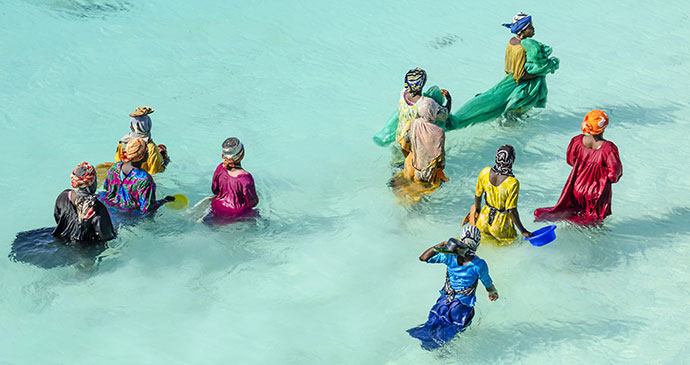
Jambiani Cultural Tour
The sprawling, linear coastal village of Jambiani consists of four amalgamated communities beginning a few kilometres south of Paje, spreading for about 6km down the coast towards Ras Shungi.
The village’s name comes from the Arabic word jambiya: a dagger with a markedly curved blade. Local legend holds that early settlers found such a knife here; proof that others had been in the area before them. It emits an active community spirit; Jambiani is probably the best place on the island to gain genuine insights into Zanzibari village life and enjoy rewarding community interaction.
If you want a change from the beach and water, the excellent Eco+Culture village tour, guided by resident Ramadhan Issa offers probably the island’s best insight into genuine rural life. The tours last anything from a few hours to the best part of a day (depending on your enthusiasm and heat tolerance), and take in many aspects of everyday life. Spend time helping the women make coconut paste, reciting the alphabet in unison at the efficient kindergarten and meeting the mganga (traditional healer). Ramadhan’s presence, reputation within the community and ability to translate allow for genuine interaction with the Jambiani residents and a thoroughly engaging time.
A percentage of your fee goes directly towards community development initiatives, such as the kindergarten and shop for an affiliated women’s handicraft co-operative near Jambiani School. Tours can also be arranged at their office (also close to Jambiani School) or through Villa Bahati Zanzibar. Do be aware, though, that of late a few villagers have apparently been operating inferior copycat walks.
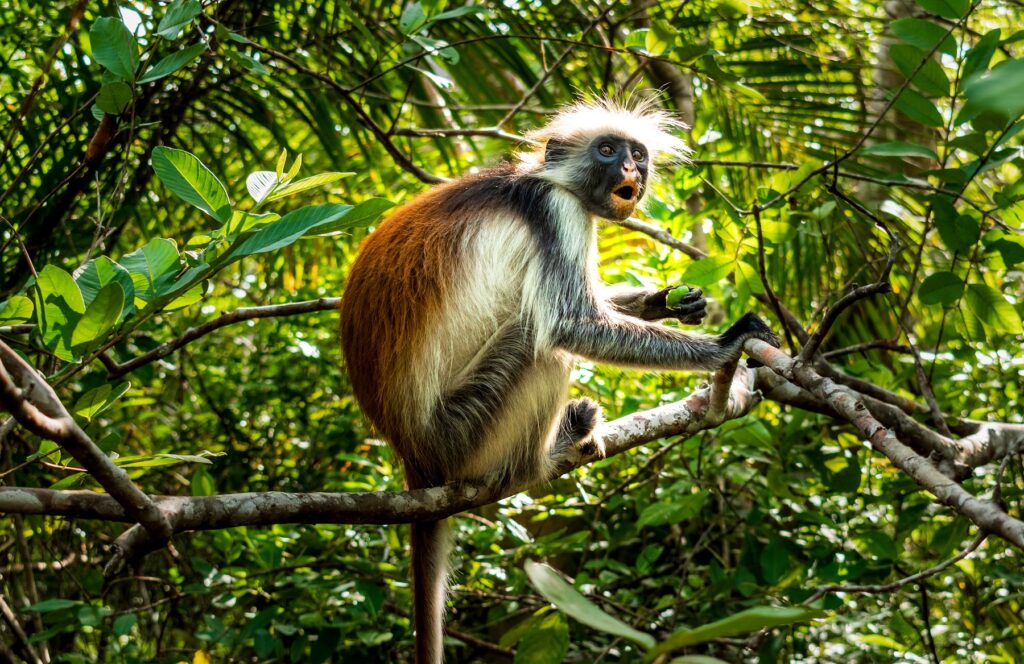
Jozani-Chwaka National Park
For most overseas visitors to Zanzibar, the island’s main draw is its fabulous beaches, supplemented by the diving and snorkelling opportunities that abound on the offshore reefs, and the compelling unique atmosphere of Stone Town. The interior, by contrast, tends to be overlooked, so much so that many visitors see nothing of it other than a few glimpses through a car window as they transfer from the airport to their chosen beach resort.
For natural history enthusiasts, the main attraction of the underrated interior is Jozani Forest, which now forms part of Jozani-Chwaka Bay National Park and harbours the island’s largest concentration of endemic Kirk’s red colobus monkey, along with rich birdlife and various other alluring forest creatures.
Zanzibar’s only national park, Jozani-Chwaka Bay protects a variety of wooded habitats, the most important of these being the largest-surviving stand of the mature indigenous forest that once naturally covered much of the island, and the extensive mangroves that line the southern end of Chwaka Bay. The park extends for more than 100km², across the narrow low-lying isthmus that links the island’s northwestern and southeastern components. The area is prone to flooding in the rainy season, giving rise to its unique ‘swamp-forest’ environment, and the large moisture-loving trees, stands of palm and fern, and high water table and humid air give the forest a cool, ‘tropical’ feel.
Historically, local people have cut trees and harvested other forest products for many centuries, but commercial use started in the 1930s when the forest was bought by an Arab landowner and a sawmill was built here. In the late 1940s, the forest came under the control of the colonial government and some replanting took place. Jozani was set aside as a forest reserve in 1952 and, as similar habitats elsewhere were cleared to make way for agriculture, much of the island’s wildlife congregated here. The forest was declared a nature reserve in the 1960s, but despite this the trees and animals were inadequately protected. Local people cut wood for building and fuel, and some animals were hunted for food or because they could damage crops in nearby fields.
Nevertheless, Jozani Forest retains much of its original natural character, and exploitation of its natural resources has more or less ceased since 2004, when it was merged with Chwaka Bay to the north and proclaimed as Zanzibar’s first (and so far only) national park. Developed from a partnership between the Zanzibar government’s Commission for Natural Resources and the charity CARE International, with funding from various sources including the government of Austria, the Ford Foundation and the Global Environment Facility, Jozani-Chwaka Bay National Park now has clear targets to protect natural resources and improve conditions for local people and wildlife in the area. It is also a popular destination for day trippers from Stone Town and the east-coast resorts, and revenue raised by tourism plays an important role in its conservation.
Jozani has a fairly good bird population, with over 40 species recorded, although many of the forest birds are shy and therefore hard to spot. Species occurring here include Kenya crested guineafowl (Guttera pucherani), emerald- spotted wood dove (Turtur chalcospilos), little greenbul (Andropadus chalcospilos), sombre greenbul (Andropadus importunus), cardinal woodpecker (Dendropicos fuscescens), red-capped robin-chat (Cossypha natalensis), dark-backed weaver (Ploceus bicolour), golden weaver (Ploceus xanthops), olive sunbird (Nectarinia olivacea) and crowned hornbill (Lophoceros alboterminatus).
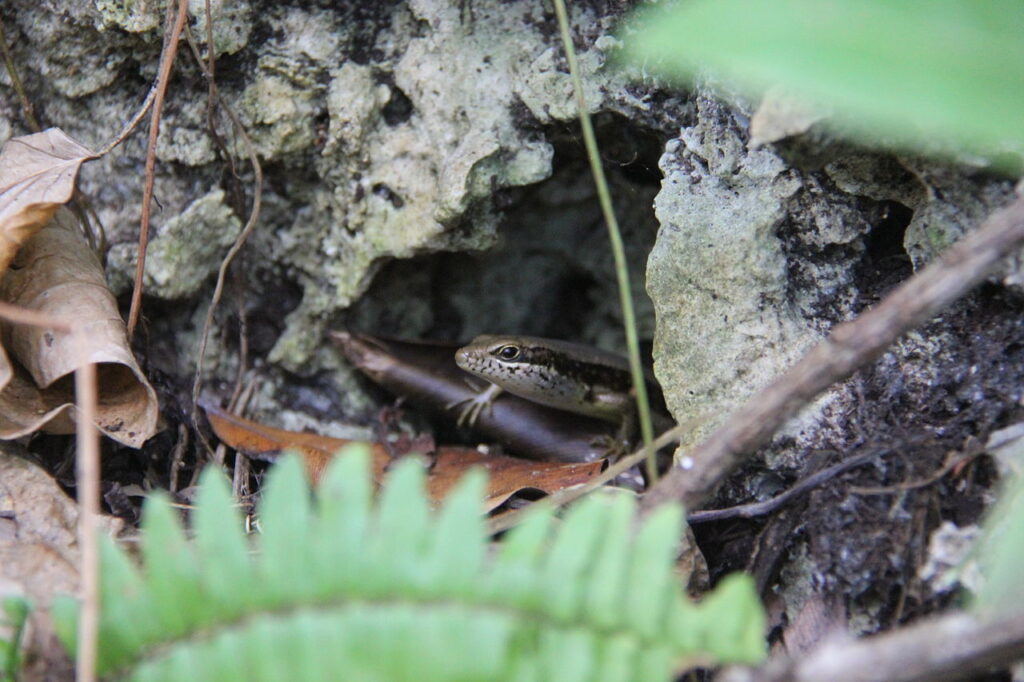
Other residents of Jozani include a population of Zanzibar Sykes’ monkey (Cercopithecus albogularis albogularis), a subspecies that is endemic to the archipelago and which you are quite likely to see on a guided walk. The forest is also home to Ader’s duiker (Cephalophus adersi), a species of small antelope found only on Zanzibar and some parts of the Kenyan coast, and the even tinier suni antelope (Neotragus moschatus moschatus). Both are extremely shy and unlikely to be seen. Ader’s duiker is virtually extinct in Kenya now and, listed as Vulnerable by the IUCN, its best chance of survival is on Zanzibar Island. Its population is between
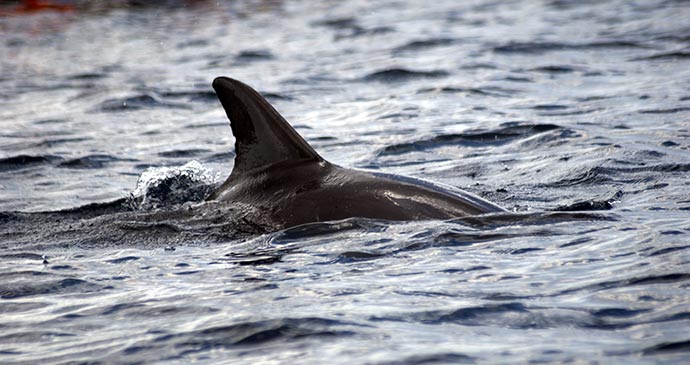
Menai Bay Conservation Area
At the far end of the island’s southwestern peninsula, on an increasingly rutted coral road 15km from Zanzibar Town, is the peaceful village of Fumba. It’s a quiet, scenic place and very few tourists ever come here, which gives it a good deal of its charm. There is only one upmarket lodge offering accommodation, but day trips to the marine conservation area of Menai Bay are run by two reputable operators, so even if you can’t stay it’s still possible to get a taste of this area.
From the beach south of the village, local fishermen take their ngalawa outriggers and dhows to the islands and fishing grounds beyond, and here too is the departure point for one of the boat trips. It’s truly stunning in the surrounding waters but if you also want to get a deeper insight into the community, ask around for a local villager called Issa Kibwana, who conducts small tours of the nearby fruit and spice plantations, or arrange a meeting with him through Sama Tours.
What to see and do
The Menai Bay Conservation Area has a number of picturesque uninhabited islands and sandbanks to explore as well as some fascinating marine life. It’s well worth taking one of the full-day sailing and snorkelling excursions here, either through Fumba Beach Lodge (if you’re a guest), with Safari Blue (departing from the Fumba Peninsula), or Eco+Culture (departing from Unguja Ukuu).
Eco+Culture is a socially & environmentally aware tour operator that specialises in the Unguja Ukuu Boat Trip. On a traditional dhow, small groups are taken past rich mangrove forests to the pristine beaches of Miwi, Nianembe or Kwale islands & accessible sandbanks. Snorkelling kit is provided & the shallow reefs around the bay & islands provide excellent opportunities to spot brightly coloured fish & corals. After a good amount of time in the water, a delicious BBQ lunch is prepared on the beach, which invariably features a selection of freshly caught fish, Swahili side dishes & tropical fruits.
The Safari Blue tour pauses at a few of the bay’s islands & sandbanks for exploration, a tasty lunch & relaxation, in between guided snorkelling forays & hopeful spotting for humpback & bottlenose dolphins. The 1st stop of the day is usually Kwale sandbank for gentle snorkelling. If conditions allow, a 2nd snorkelling session takes place at West Kwale. Sailing on further, BBQ seafood lunches await on Kwale Island, where tamarind trees offer shade (vegetarian/non-fish options must be ordered in advance).
Some shade is available on these boats and beaches, but remember to apply sunscreen and preferably wear a T-shirt for protection when snorkelling. Towels and waterproof shoes are also recommended as you’ll most likely have to wade out to the boat across coral rock.
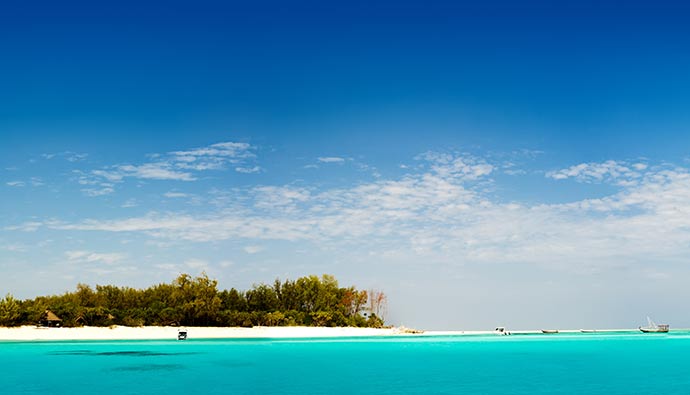
Mnemba Island
Lying approximately 2.5km off the northeast coast of Zanzibar, Mnemba is a picture-perfect 11ha coral island enclosed by calm turquoise waters that hide some of East Africa’s best coral reefs in a relatively unspoilt aquatic wonderland. Now privately leased by &Beyond, the previously uninhabited island operates as one of Africa’s most-exclusive and sumptuous beach retreats, and as such cannot be visited without an overnight booking. Fortunately, however, there are no restrictions on diving and snorkelling sites on the fringing reefs, where several spectacular submarine sites are visited on popular daily excursions out of Nungwi, Matemwe, and elsewhere in northern Zanzibar.
The triangular perimeter of Mnemba comprises 1.5km of soft, brilliant-white coral-sand beaches: perfect for romantic evening strolls, migrating wading birds, scuttling ghost crabs, and nesting turtles. At the island’s centre, a casuarina forest is home to nothing more dangerous than cooing red-eyed doves, colourful butterflies, and an ancient well.
For most visitors, Mnemba’s astonishingly diverse marine fauna is of more interest than its terrestrial wildlife. The island is part of a coral formation that supports a staggering variety of marine creatures: not only hundreds of different species of colourful reef fish, but also a wealth of pelagic visitors, ranging from marine turtles and dolphins to whale sharks and manta rays. The reefs were once threatened by overfishing and a general disregard for the fragility of the environment, but sustained lobbying by &Beyond and the government resulted in the official creation of the Mnemba Island Marine Conservation Area in 2002. This was later expanded to become the Mnemba-Chwaka Bay Marine Conservation Area, which protects the entire barrier reef fringing the northeast coast as far south as Chwaka, and Mnemba’s future now seems reasonably secure.
A small conservation levy is charged on all watersports, notably snorkelling and diving, within the protected zone. This revenue is paid into a community conservation fund, the primary purpose of which is to show local fishermen and their communities the very real economic value in protecting rather than exploiting these exceptional reefs. In addition, the lodge and Africa Foundation (&Beyond’s social development partner) have invested at least US$180,000 in community projects on Zanzibar close to Mnemba: building classrooms, a windmill and ablution blocks, refurbishing the doctor’s house, supporting the orphanage, and assisting villagers with access to clean water.
Nungwi and Kendwa
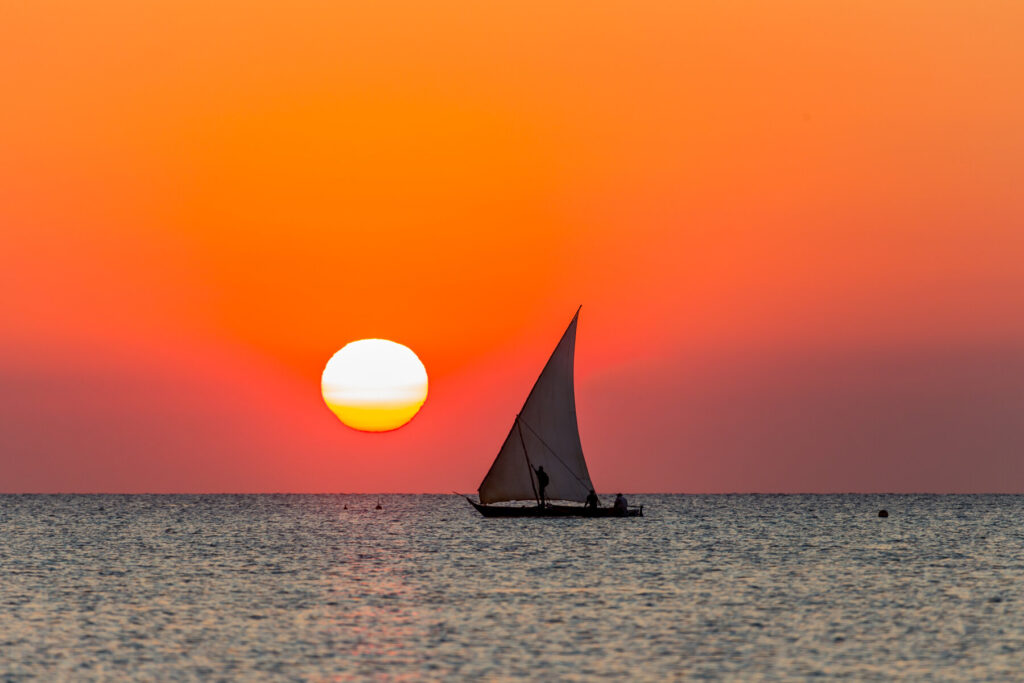
Nungwi
Nungwi is traditionally the centre of Zanzibar’s dhow-building industry, and over the last decade the coastline here has rocketed in popularity to become one of the island’s busiest beach destinations. The ramshackle fishing village has been largely sidelined by an ever-increasing number of guesthouses, bars, shops, restaurants and bikini-clad Europeans.
Over the last decade or so, the number of hotel rooms in Nungwi has rocketed from around 400 to well over 1,000. Hotels have sprung up in literally every direction, roads have been repeatedly re-routed and costs have escalated. With the exception of the World Bank-funded tar road to Stone Town, and the police post paid for by local hoteliers, there has been little thought given to the pressure on natural resources, specifically fresh water, with this vast increase in visitor numbers, and sadly the local population has suffered the brunt of the negative consequences, in very direct contrast to those who come to enjoy their ‘island paradise’.
That said, the Nungwi beach scene has matured in recent years and become a little more comfortable in its own skin. The beachfront hassle has declined in favour of clusters of local curio stalls; basic shops and small businesses have been established offering everything from massage to snorkel hire; the wild nights have tempered, making way for tables set for feet-in-the-sand beach dinners; and a couple of cool cocktail spots have taken the place of pop-up makuti-roofed bars. Professionalism has spread, too, with benefits to the community through training and employment and, of course, to the visitor’s experience. Dive operations are now universally reliable and reputable, accommodation standards are on the rise (at all budgets), and the village is benefiting from some decent efforts at hotel-funded community projects.
After a few crazy years of incessant building and change, things are finally settling down. Gardens have flourished in those dusty construction sites and, though Nungwi has changed irrevocably from the sleepy island backwater of old, it is once again reclaiming some of its exotic charm. Backpackers still come here looking for a cheap, fun beach break, but now so do city executives, honeymooners, retired couples and families – and all appear to be having a good time. Within the village, population numbers have spiralled with immigration (local and from the mainland) driven by the prospect of employment and tourist dollars; for the first time, Nungwi’s population hit 10,000 in the 2012 census and it is now almost certainly the island’s second-largest settlement, behind Zanzibar Town.
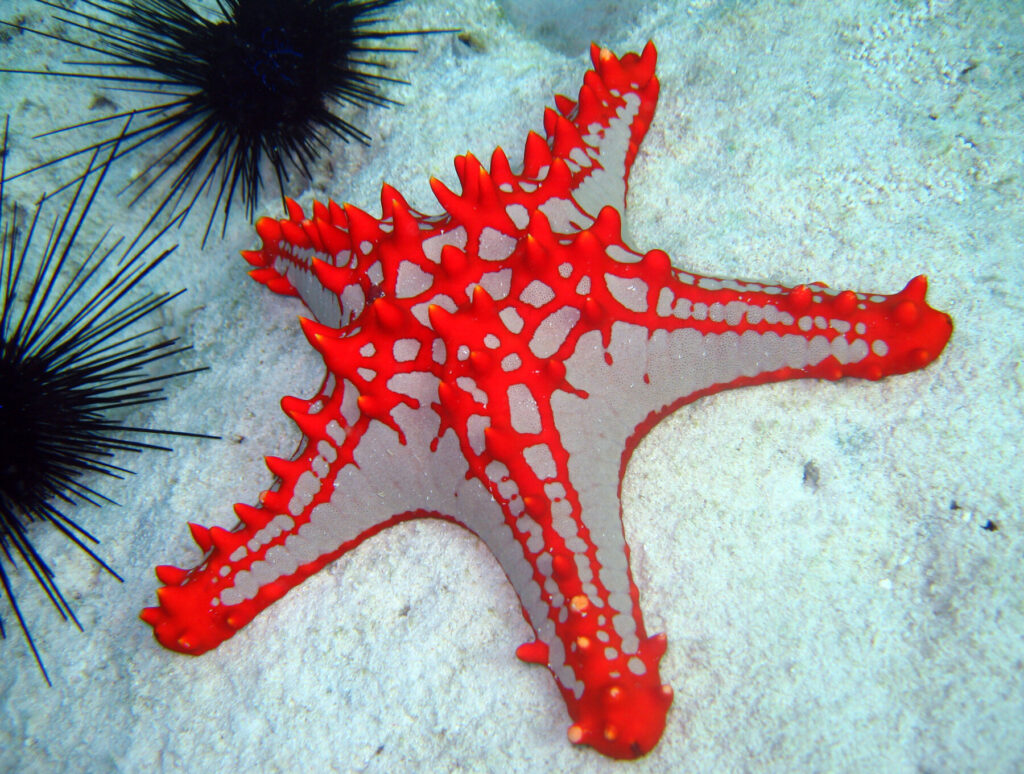
Ironically, given its current state, Nungwi was one of the last coastal settlements on Zanzibar to have a hotel, or any tourist facilities. As recently as the mid 1990s, proposals for large developments in the area were fiercely opposed by local people. Today, in spite of the influx of tourists, Nungwi remains a fairly traditional, conservative place with proudly independent villagers. They are not unfriendly, however, and most visitors find that a little bit of cultural respect, politeness and a few words of Swahili go a long way.
Most visitors come to this area to relax on the beach, swim in the sea, and perhaps to party at night. For local attractions, the small turtle sanctuary on the beach, terrific local coral reefs and growing array of watersports are still a draw. If you want a more cultural experience, check out the village tour, head down the coast to the 16th-century Swahili ruins at Fukuchani and Mvuleni, the bustling and ramshackle market at Mkokotoni, or venture across the water to Tumbatu Island. If you want peace, quiet and fewer people, you will probably need to visit a different corner of the island.
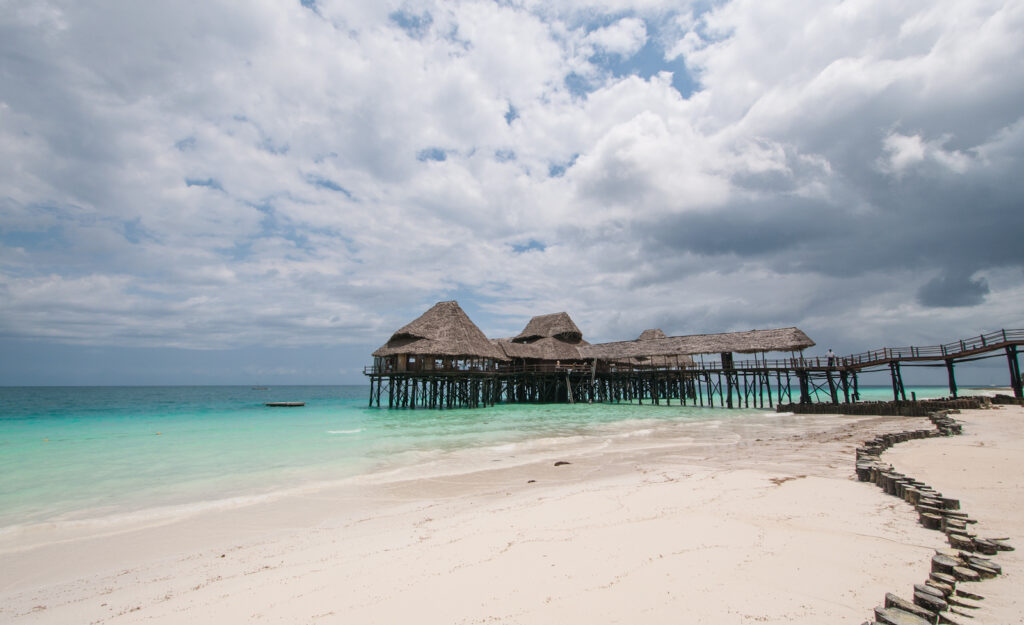
Kendwa
On the west coast, about 4km south of Nungwi, is the tiny, linear village and beautiful beach of Kendwa. Once offering relief from the noise and crowded development of Nungwi, its glorious, wide, sandy beach used to cater almost exclusively to free-spirited budget travellers and those in search of simple escapism – that is, until the upmarket coastal La Gemma Dell’Est arrived around 1km further north in 2005. It’s now somewhat less serene. A clutch of neighbouring, luxurious resorts now line its shore and the simple beach huts of old are increasingly hard to find. Unlike some areas, however, the developments here are generally well landscaped, low-level and on large plots, giving a greater sense of space and making it a peaceful place to chill out.
A few original beach bars remain, alongside the beachfront hotel restaurants and their banks of carefully guarded loungers, and there are three great dive schools. The beach also benefits from less extreme tidal changes than the east coast, making swimming possible all day long. Things do liven up in the evenings, with bonfires, barbecues and serious Full Moon beach parties, attracting island- wide crowds, but otherwise Kendwa is still a relative haven of peace – though you do have to negotiate a fairly awful (but mercifully short) approach road to get here!
Sunbathing, beach volleyball, diving and snorkelling are the main activities in Kendwa – it’s a terribly laidback beach hangout. The vast majority of the hotels and guesthouses will hire out basic snorkelling gear, organise day trips by boat to Tumbatu Island, and offer sunset dhow cruises; some will rent out kayaks, too.
Paje
Once a small fishing village, straggled along the coast, Paje is centred on the junction of the tar road from Zanzibar Town with the main east coast road between Michamvi and Makunduchi. This prime location has always made it the easiest place on the east coast to reach by public transport and certainly contributed to its early success as the backpackers’ choice location.
After an initial peak, Paje’s visitors declined as Nungwi claimed the crown for budget beach action, but the north is pulling upmarket again these days, and the backpacker pendulum is currently swinging back to the east coast. Recent years have also seen a veritable boom in Zanzibar kitesurfing, and Paje is now firmly on the map as a destination for sun-blond kiters seeking a cheap getaway in warm, tropical waters with reliable conditions. More lodges have sprung up, old ones have expanded, cafés have opened, a basic curio street now stretches back from the beach, and everywhere along this stretch, kites fill the sky. During peak season, the beach is pretty hectic with people and fluttering silk, and swimming is an absolute non-starter.
The kitesurfing community – both professional centres and visitors – are generally fairly laidback and responsible, but the sheer numbers of visitors here have attracted some associated troubles: a rise in beach boys permanently lingering on the sand, some beach robbery and reports of increasing problems with drugs. By and large, the area surrounding the village remains a quiet spot for an idyllic beach break, but it’s worth taking sensible precautions when wandering around. Genuine interaction with the local community is virtually non-existent here, with only the beach traders mixing with the tourists.
What to see and do
The primary activities in Paje are sunbathing on the beautiful beach and swimming in the sea. If staring out at the waves breaking along the fringe reef pricks your curiosity, there are two dive schools and a number of European-run kitesurfing operations; be aware, though, that the latter is seasonal, with the best times being December to February, or even better, from June to August. For those tired of the salt and sand, a small heart-shaped pool at Dhow Inn is open to non-residents for a daily fee of US$5.
An informative diversion is the Mwani Zanzibar Seaweed Company, which operates a suburban visitors’ centre in the back roads, about 1km north of the village centre. Given the visibility of seaweed farming, it’s well worth checking out these lovely new ‘headquarters’ to better understand its very real importance to the community. An informative 1-hour guided tour, including a glass of seaweed juice and a visit to one of the seaweed production areas on the nearby beach, costs US$15 per person. The on-site shop sells a range of organic seaweed products, including soaps, scrubs, and oils, that make perfect, lightweight souvenirs.
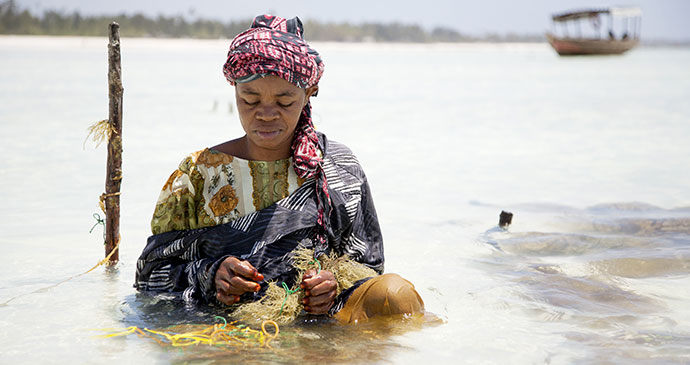
There is also an old mausoleum: a low rectangular edifice with a castellated wall, inset with antique plates and dishes. This design is thought to have originated in Persia, and may indicate that this part of the island was settled by Shirazi immigrants prior to the western side of the island, near present-day Zanzibar Town. Ask one of the local villagers to escort you for a small fee.
In the last decade, kitesurfing has literally taken off on Zanzibar, particularly in the area around Paje. A colourful and fascinating spectator sport, its rise comes as no surprise to the many operators here. Warm, calm, tropical waters, a shallow lagoon and constant steady wind (13–25 knots is ideal) for eight months of the year have all contributed to its success. There is good, flat, waist-deep water for freestylers at low tide, and choppy conditions (1–3m waves) beyond the reef at high tide that thrill the wave riders.
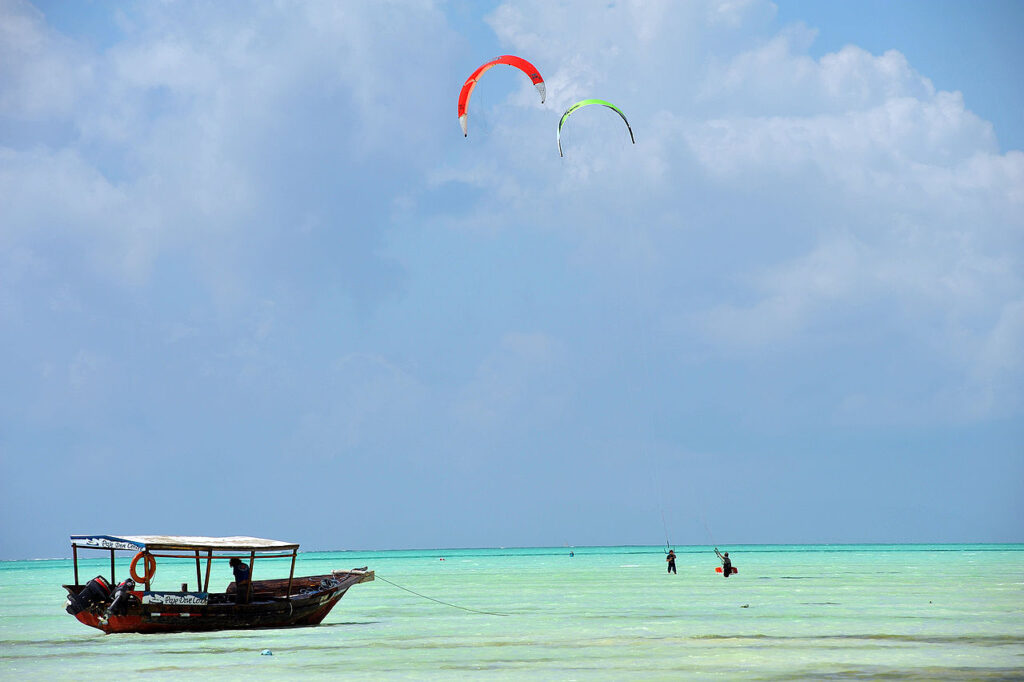
Beginners can take courses with licensed instructors, advanced riders can bring and store their own kit or hire on the beach, and the kitesurfing community is generally professionally run on the island. Perhaps the only drawback of the popularity is that swimmers are perhaps better off away from this kiting heartland, where boards zip through the surf from dawn to dusk. Should this be of interest to you, equipment, courses and more information can be found at Airborne Kite Centre, Harakakite or Kite Centre Zanzibar.
Pemba Island
Pemba Island lies about 80km to the northeast of Zanzibar Island, and about the same distance from the Tanzanian mainland, directly east of the port of Tanga. Smaller than Zanzibar, at just 67km long, it covers an area of 985km² and has a more undulating landscape, even though its highest point is only about 95m above sea level. But one of the first things that most strikes the visitor is how green it is. More densely vegetated than Zanzibar (with both natural forest and plantation), Pemba has always been seen as a more fertile place. The early Arab sailors called it El Huthera, meaning ‘The Green’. Today, as always, far more cloves are grown here than on Zanzibar.
With 406,848 inhabitants recorded in the 2012 census, Pemba is – like Zanzibar – one of the most densely populated areas of Tanzania, although this is no urban jungle. Most of the population live in traditional square houses, with a wooden frame, mud walls and thatched roofs (occasionally upgraded to corrugated iron). The largest town is Chake Chake, the island’s capital and administrative centre, about halfway down the western side of the island. Other main towns are Wete, in the north, and Mkoani, the main port, in the south.
What to see and do
For today’s visitor, Pemba’s greatest attractions include long, empty beaches, some excellent diving and snorkelling, and the unspoilt Ngezi-Vumawimbina Forest Reserve. There are several small historical sites which, although not ‘must sees’, ertainly repay a visit if you use just a little imagination. Perhaps more important, though, attracting a few thousand visitors annually, and with relatively few tourist facilities, Pemba is still a place where travel for its own sake (by car, bus, bike or on foot) remains a prime reason for visiting.
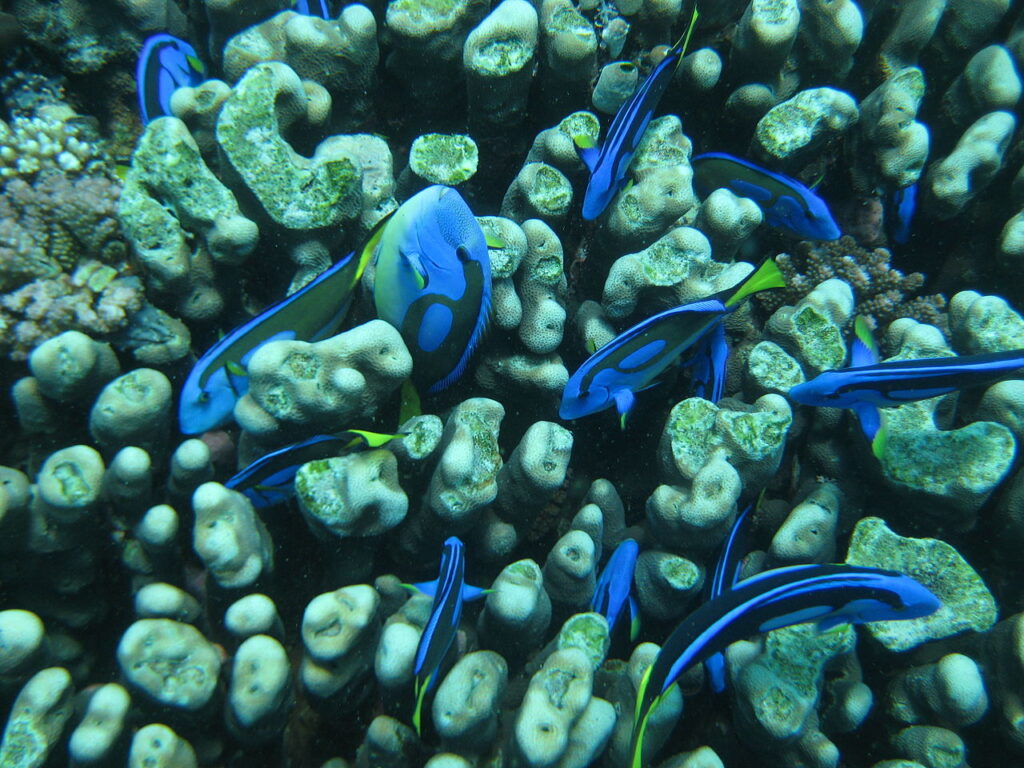
Diving
Recreational diving off Pemba is, for the most part, confined to the Pemba Channel on the more sheltered west of the island. Misali Island in particular provides a wonderful array of corals and fish life. Unlike the reefs around Zanzibar Island, many of the reefs off Pemba fall away into steep walls, offering opportunities for some exciting drift dives and the chance to see creatures such as the spotted eagle ray, with its 3m wingspan.
Despite Pemba’s undoubted reputation for the big pelagics, such as barracuda, trevally, giant groupers and the endangered Napoleon wrasse, sightings of shark are extremely rare on the west of the island, and even to the south. If it’s sharks that you’re after, you need to deep dive in the east, where the steep walls and fast currents attract hammerheads.
Most operators use either speedboats or motorised dhows to get to the dive sites. While the former are undoubtedly faster, there’s a lot to be said for the leisurely pace of a dhow, giving the opportunity to take in the beauty of the islands or to watch large teams of fishermen working with their nets from narrow wooden boats. On the way to the dive sites, particularly in the morning and further north, you may be joined by schools of common or spinner dolphins, just tagging along for the ride, and occasionally humpback whale sightings have been reported. See 360 Dive Pemba, Dive 710 or Swahili Divers for more information.
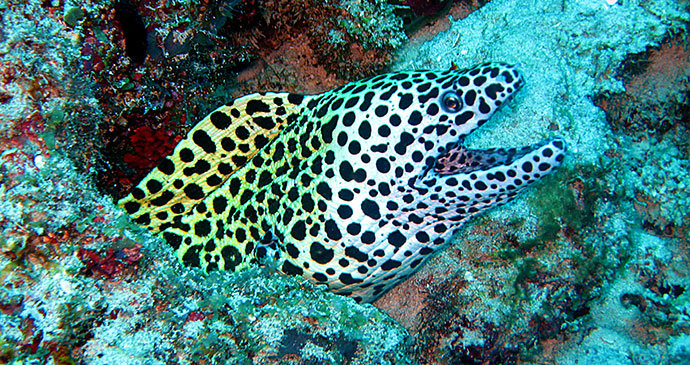
Snorkelling
While there is no shortage of places to swim and snorkel off Pemba, most are viable only at high water. One of the best places for snorkelling lies in front of the visitor centre on Misali Island, where – in just a few feet of water, and regardless of the tide – countless fish and other underwater life can be seen in almost perfect visibility.
As you drift through the water, keep an eye out for unicornfish, sea goldies, cleaner wrasse, deep red and blue parrotfish, and the startling Moorish idol. Giant clams grip the reef, and sea cucumbers edge along the sandy bottom; you may even spot a grouper. Other excellent sites include the Aquarium in the Njao Gap and the 1km-long reef protected by the Kwanini Foundation in front of the Manta Resort. Other possibilities include areas around the sandbanks that dry out at low tide along the west coast. Snorkelling trips can be organised through all the hotels and lodges; expect to pay US$20–40, depending on the distance to the site.
Kayaking
All the larger tourist lodges and hotels have kayaks, with short guided trips offered by Fundu Lagoon for their guests. The Manta Resort offers kayak safaris (US$30 pp), while at Swahili Divers, a half-day guided mangrove tour costs US$35.
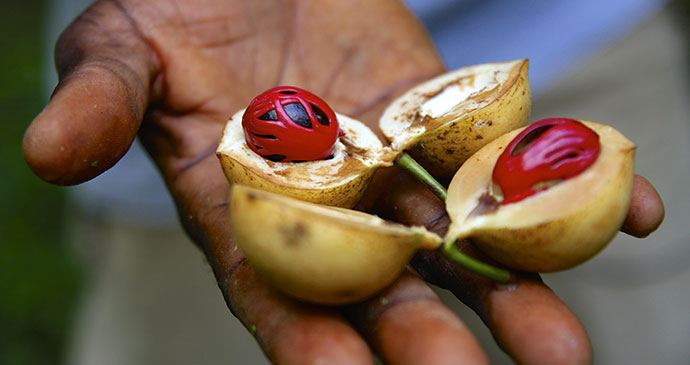
Spice tours
Sooner or later every visitor to Zanzibar will be offered a ‘spice tour’ – a trip to the farmlands just outside Stone Town to see aromatic plants and herbs growing wild or cultivated in kitchen gardens. Even if you decline a tour, the array of spices on offer in the souvenir shops or heaped in baskets in the local markets will tell you that spice is central to Zanzibar’s history and economy.
The history of spices in Zanzibar begins early in the 16th century, when the ‘spice race’ between the major European powers to control the lucrative trading routes to the Far East was at its height. Portuguese traders gained a toehold on Zanzibar as part of their plan to rule the coast of East Africa and imported various plants, including spices, from their colonies in South America and India. Some land was cleared for plantations, but the Portuguese never really developed their presence on Zanzibar beyond a military one.
It was left to the Omani Arabs, who ruled Zanzibar from the early 19th century, to develop Zanzibar economically as a spice-producing entity. Sultan Seyyid Said, the first Omani sultan to govern Zanzibar, quickly realised the potential of his new dominion, with its hot climate and regular rainfall, as a location for spice farming. With the demise of the slave trade in the late 19th century, spices became Zanzibar’s main source of income.
When the era of the sultans ended and the long arm of the British Empire reached Zanzibar, the island’s new colonial administrators encouraged the farming of spices and other useful plants, bringing European scientists to establish experimental agricultural stations and government farms such as those at Kizimbani and Kindichi. Today these areas still contain spice plantations controlled by the modern Tanzanian government.
But spices in Zanzibar today are by no means simply the preserve of governments keen to produce cash-rich export products or a useful tourist attraction. For the ordinary people of Zanzibar, spices and useful plants are a vital part of everyday life and a rich element in the island’s strong and vibrant culture. The spices grown in village kitchen-gardens give their flavour to the distinctive cuisine of Zanzibar, provide innumerable cures for everyday ailments, and yield the dyes and cosmetic products needed to celebrate weddings and festivals.
A spice tour is probably the best way of seeing the countryside around Stone Town and meeting rural communities. Guides take you on a walking tour of the villages and plantations at Kizimbani or Kindichi, picking bunches of leaves, fruit and twigs from bushes and inviting you to smell or taste them to guess what they are. Pretty much all the ingredients of the average kitchen spice rack are represented – cinnamon, turmeric, ginger, garlic, chillies, black pepper, nutmeg and vanilla among many others. Local children follow you all the way round, making baskets of palm leaves and filling them with flowers to give to you. At lunchtime, you’ll stop in a local house for a meal of pilau rice and curry, followed by sweet Arabic coffee and perhaps a slice of lemongrass cake. Many spice tours include a visit to the Persian baths built by Sultan Said for his harem, and stop at Fuji or Mangapwani beaches just outside Stone Town for a swim on the way back.
All in all, even if horticulture isn’t one of your interests, a spice tour is still an excellent way of gaining an insight into one of the most important aspects of rural life in Zanzibar.
Stone Town
Zanzibar Town is divided in two by the wide thoroughfare that is officially called Benjamin Mkapa Road but is more commonly referred to by its older name: Creek Road (in reference to a creek that was long ago reclaimed). On the west side of Creek Road is the ‘heart’ of Zanzibar Town: the evocative old quarter, usually called Stone Town. This is the more interesting section for visitors: many of the buildings were constructed during the 19th century (although some date from before this time), when Zanzibar was a major trading centre and at the height of its power.
The trade created wealth which in turn led to the construction of palaces, mosques and many fine houses. Discovering the architectural gems hidden along the tortuous maze of narrow streets and alleyways that wind through Stone Town is part of the island’s magic for many visitors. Aside from the souvenir Tingatinga paintings, neatly folded kanga fabrics and beaded jewellery, it’s a scene virtually unchanged since the mid 19th century.
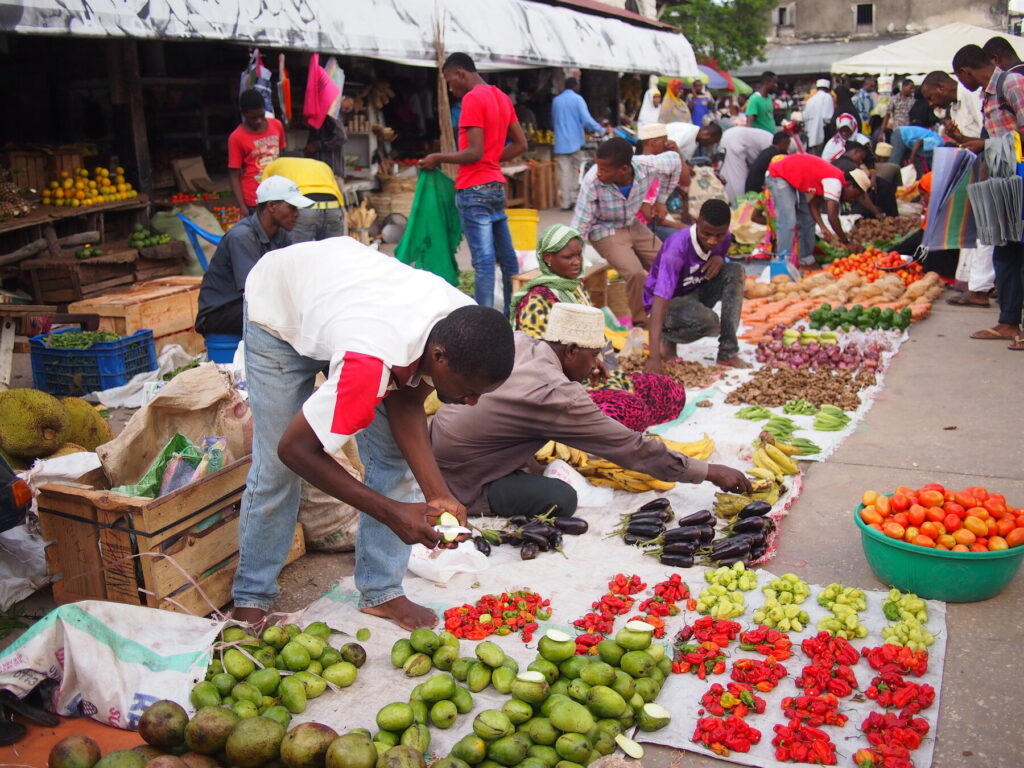
What to see and do in Stone Town
One writer has compared the old Stone Town of Zanzibar to a tropical forest where tall houses stretch to the sky instead of trees, and the sun filters through a network of overhanging balconies instead of foliage.
Its labyrinth of twisting streets and alleys is a stroller’s paradise, with new sights, sounds or smells to catch the imagination at every turn: massive carved doors, ancient walls, tiny tempting shops with colourful wares and bustling shoppers, old men hunched over a traditional game, kids with homemade toys, ghetto-blasters at full volume, little boys hawking cashews or postcards or fresh bread, the sound of the muezzin calling from the mosque and the scent of cloves or ginger or lemongrass – and everywhere the echoes of Zanzibar’s rich and fascinating history, the sultans, shipbuilders, explorers, slave markets, merchants and exotic spice trade.
The market
The market is about halfway along Creek Road and a good place to visit even if you don’t want to buy anything. At the end of the 19th century, the town’s marketplace was inside the Old Fort. Today’s market hall was built in 1904, and some very early photographs of the market displayed in the museum show that very little has changed since then. The long market hall is surrounded by traders selling from stalls, or with their wares simply spread out on the ground.
It’s a very vibrant place where everything, from fish and bread to sewing machines and secondhand car spares, is bought and sold. Don’t miss the swathes of multi-patterned cotton fabrics, the fragrant spices and mound after mound of exotic fruit and vegetables, though – and just enjoy people-watching and being part of a Zanzibar experience which hasn’t yet become especially touristy.
Livingstone House Museum
On the northeast side of the town, in the Kinazini waterfront quarter, this old building was constructed in around 1860 for Sultan Majid, at a time when Zanzibar was used as a starting point by many of the European missionaries and pioneers who explored eastern and central Africa during the second half of the 19th century. David Livingstone, probably the most famous explorer of them all, stayed in this house before sailing to the mainland to begin his last expedition in 1866. After independence and the Revolution the house became the Zanzibar headquarters of the Tanzania Friendship Tourist Bureau, the forerunner of the Zanzibar Tourist Commission.
A large downstairs room is due to open as a Livingstone Museum at an unspecified point in the future, under the curatorship of Said El-Gheithy, the local academic and guide who is also the curator of the Princess Salme Museum. When open, it will offer displays of original artefacts and reproductions of items associated with Livingstone’s life, as well as story boards recounting his travels.
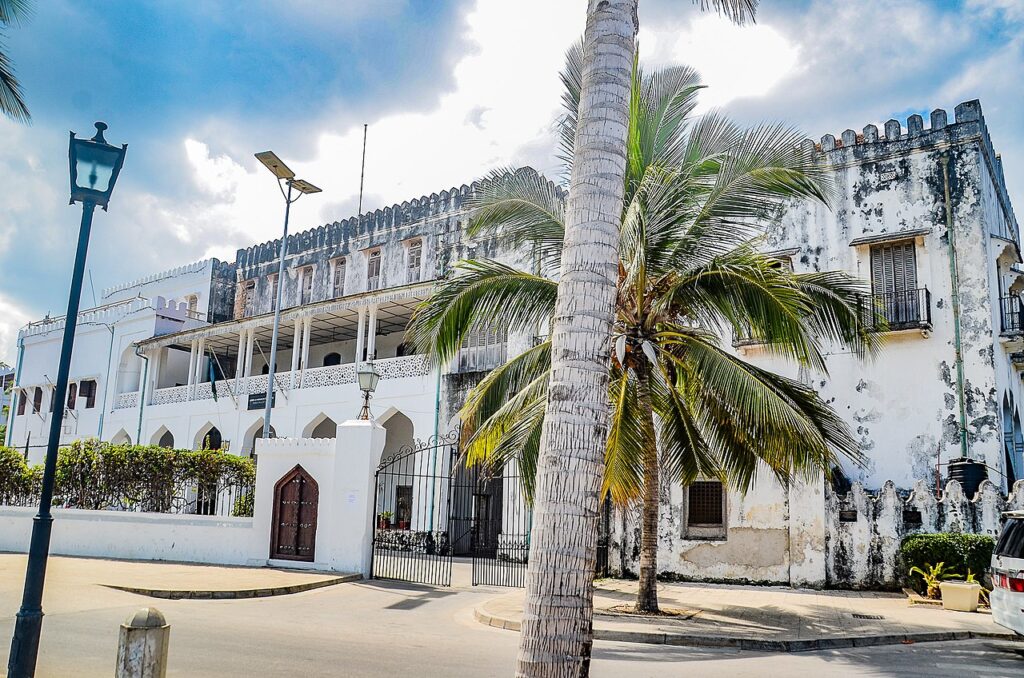
Palace Museum
Housed in a large white building with castellated battlements situated on Mizingani Road, where the latter runs very close to the sea, this palace was built in the late 1890s for members of the sultan’s family and was originally called the Sultan’s Palace. From 1911, the palace was used as the Sultan of Zanzibar’s official residence, but was renamed the People’s Palace after the 1964 Revolution, when Sultan Jamshid was overthrown. It continued to be used as government offices until 1994 when the palace was turned into a museum dedicated to the history of the sultans of Zanzibar. Remarkably, much of their furniture and many other possessions survived the revolutionary years and can now be seen by the public.
The upper floors are largely devoted to exhibits from the later, more affluent period of 1870–96, with thrones, banqueting tables (the banquet room is said to be still used on occasions) and ceremonial furniture, plus personal items such as beds (look out for the intricately carved ebony love seat and the Indian sofa with Krishna on its back) and the sultan’s mobile water closet with its unusual arrangements.
The Old Fort
The Old Fort is a huge building, containing large open courtyards, and with high, dark walls topped by castellated battlements. It was built between 1698 and 1701 by the Busaidi group of Omani Arabs, who had gained control of Zanzibar in 1698, following almost two centuries of Portuguese occupation. Today, the fort has been renovated, and is open to visitors.
It is easy to walk around the top of the battlements and enter the towers on the western side, which house ‘Colours of Zanzibar’ in the southwest tower and the ‘Collective Art Gallery’ in the northwest tower, from where local art can be purchased. In 1994, the eastern courtyard was turned into an open-air theatre. The development was imaginative yet sympathetic to the overall design and feel of the original building: seating is in an amphitheatre, and the fort’s outer walls and the neighbouring House of Wonders form a natural backdrop. It’s used for contemporary and traditional music, drama and dance, including most performances in the annual Sauti za Busara and the Zanzibar International Film Festival.
The entrance area also houses a tourist information desk, with details on performances in the amphitheatre and other events around town, plus a selection of books for sale and a range of tour company leaflets to browse. There are also several spice and craft shops, a pleasant café and public toilets. With so many attractions and facilities, it’s easy to spend an hour or so here.
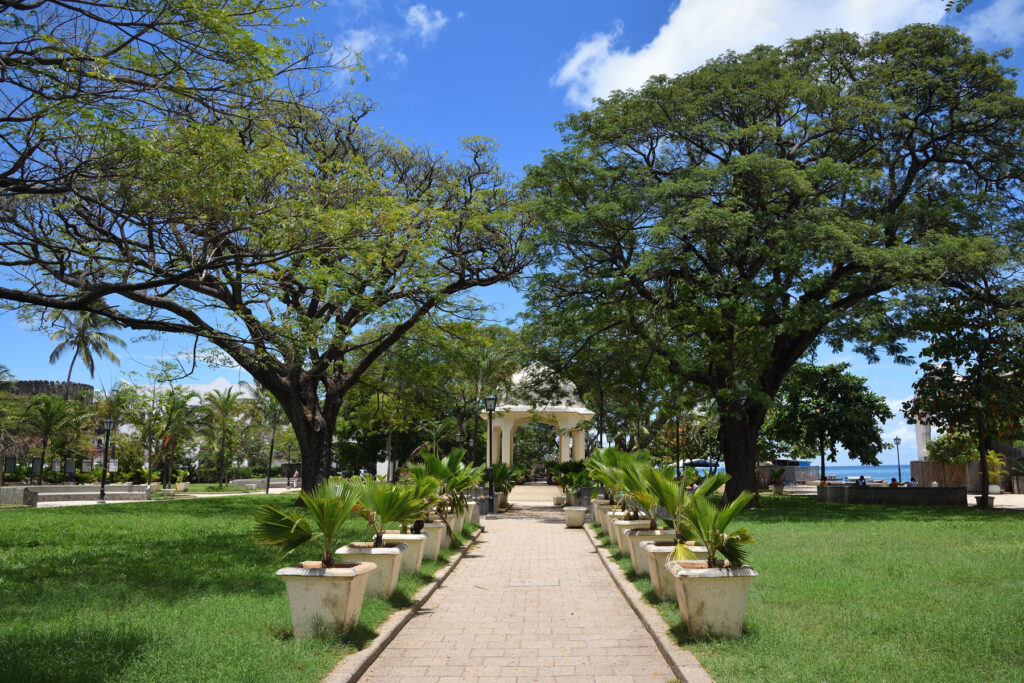
Forodhani Gardens
The Forodhani Gardens are between the Old Fort and the sea, overlooked by the House of Wonders. The gardens were first laid out in 1936 to commemorate the Silver Jubilee of Sultan Khalifa (sultan from 1911 to 1960), and were known as Jubilee Gardens until the 1964 Revolution.
In 2009, after years of neglect, the gardens were re-landscaped by the Aga Khan Trust for Culture and are now the pulsing heart of Stone Town every evening when the food stalls come into their own. Everyone agrees the new gardens are a vast improvement, with the street lighting, waste collection, a new sea wall of salvaged stone, and an organised food court for the evening stallholders. Cafés, the bandstand, a dhow-shaped adventure playground and tropical planting amid manicured lawns make it look like the central park it is. We hope this project will prove a catalyst for ongoing urban upgrading and economic opportunity in Stone Town, as well as improving the rest of the waterfront’s aesthetic appeal.
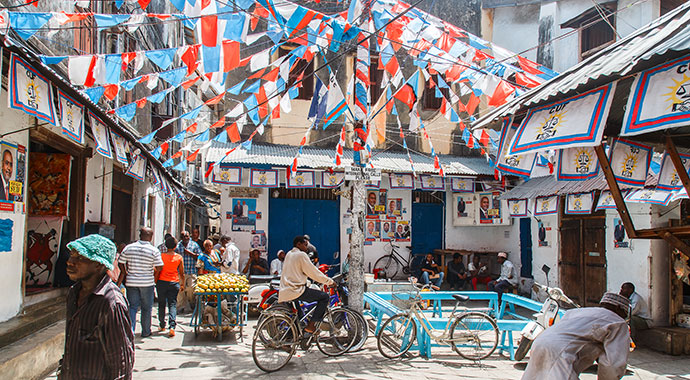
Related books
For more information, see our guide to Zanzibar:
Articles about Zanzibar
Home to traditional coastal villages, excellent wildlife and some of the best dive sites in East Africa, Zanzibar is a paradise well worth visiting.
Covering even more of the world than our guidebooks, forests are ubiquitous but almost always different.
